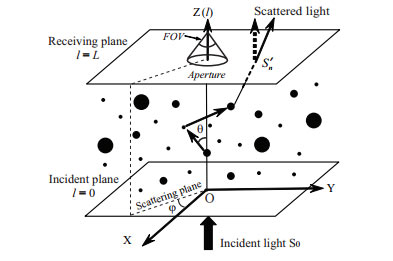Can Quantum Communication Work For Underwater Vehicles and Sensors?
Chinese physicists say quantum key distribution is possible through clear ocean water at distances of up 125 metres and at data rates capable of sending a secure video feed.
When it comes to sending information securely, there is one technique that leaves all other in the shade. Quantum key distribution makes it possible to send messages with perfect secrecy. And since this is guaranteed by the laws of physics, secrecy doesn’t get better than that.
So it’s no wonder that governments, the military and commercial organisations all over the world are interested in exploiting this trick. Indeed, commercial quantum key distribution over optical fibres is already in use in various places and researchers have demonstrated quantum key distribution through free space over distances of up to 144 km.
But what of water? It’s easy to imagine that submarines might want to exploit this kind of communication as might underwater sensor networks or autonomous underwater vehicles and so on. But that raises an obvious question: is it possible to communicate through seawater using this ultimate form of quantum security?
This story is only available to subscribers.
Don’t settle for half the story.
Get paywall-free access to technology news for the here and now.
Subscribe now
Already a subscriber?
Sign in
You’ve read all your free stories.
MIT Technology Review provides an
intelligent and independent filter for the
flood of information about technology.
Subscribe now
Already a subscriber?
Sign in
Today we get an answer thanks to the work of Peng Shi and pals at the Ocean University of China in Qingdao. These guys have calculated how far photons can travel through water while preserving the quantum information they carry. And they conclude that communication secured by quantum mechanics ought to be possible over distances of up to 125 metres in clear ocean water.
First some background. Water absorbs visible light but the attenuation depends on the wavelengths involved. For example, it absorbs red light strongly but blue-green light with a wavelength of between 400 and 500 nm, can travel much further. Indeed, researchers have recently shown that it is possible to transmit information at a rate of 10 megabits per second over distances of up to 350 metres in clear ocean water.
So Peng and co explore whether this might allow quantum communication over similar distances. To find out, they first calculate the rate at which 450 nanometre polarised light is attenuated in sea water and then calculate the noise that would be present (and so the level of error correction required).
They conclude that it ought to be possible to send data at a rate of around 215 kilobits per second at a distance of 125 metres in clear ocean water. “It could be used for encrypting most audio information and some low bit rate video information in underwater communications,” they say.
That’s a reasonable bit rate at distances that are certain to be useful for various interested parties. It’s not hard to imagine it being used to send a secure video feed from an autonomous sub for example.
Of course, these results are the theoretical maximum. In practice, however, the distances would be significantly shorter without technologies that can help screen out the noise. Peng and co suggest that placing 450 nm filters over the detectors or gating them so they only look for photons during the short time window over which they ought to arrive.
Either way, we ought to see experiments in this area starting relatively soon (if they haven’t already been done in secret). It’s worth pointing out that the early tests on quantum key distribution through the atmosphere started at very modest distances. But in 2007, researchers reported successful quantum communication over a distance of 144 km—that’s the theoretical maximum.
How soon before oceanographers achieve the theoretical maximum underwater?
Ref:arxiv.org/abs/1402.4666: Feasibility of Underwater Free Space Quantum Key Distribution
